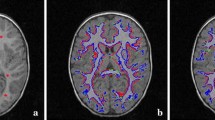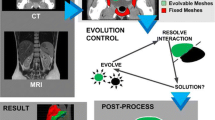Abstract
Medical image is the visual representation of anatomy or physiology of internal structures of the body and it is useful for clinical analysis and medical intervention. Modern medical imaging devices provide an excellent view of anatomy and physiology of internal structures of the body non-invasively. However, the usage of computers to measure, examine and determine the state of internal structures of the body with accuracy and efficiency is limited. Automated medical image segmentation techniques have wide range of utility in diagnosis, treatment planning and computer integrated surgery. These automated medical image segmentation techniques could also be used as an assisting tool to radiologists by saving their time in selecting, measuring and classifying various findings. However, automated medical image segmentation is challenging because the quality of the image is low due to the presence of noise, artefacts, partial volume effects etc., low contrast between different structures in an image and intensity variations within a region itself. This research paper focuses on fastening a region based deformable model called Chan-Vese model through various first order optimization techniques. Chan - Vese model can perform segmentation effectively even in low quality images but the limitation of Chan-Vese model is that convergence towards optimal solution is slow. The objective of this work is to fasten the convergence of Chan-Vese model towards optimal solution by using various first order optimization schemes. Chan-Vese model with proposed optimization techniques is tested with X-ray, CT and MRI images of different organs. Comparative study between traditional optimization technique used in Chan-Vese model and proposed optimization techniques has been carried out. From the comparative study, it is found that Chan-Vese model with proposed optimization schemes is efficient in terms of speedy delineation with less number of iterations and processing time. Therefore, this fastened Chan-Vese model is better suited algorithm for fast image segmentation needs such as tracking of region of interest in subsequent frames in a video.




Similar content being viewed by others
References
Achuthan A, Rajeswari M, Ramachandram D, Aziz ME, Shuaib IL (2010) Wavelet energy-guided level set-based active contour: a segmentation method to segment highly similar regions. Comput Biol Med 40(7):608–620
Airouche M, Bentabet L, Zelmat M (2009) Image segmentation using active contour model and level set method applied to detect oil spills. Proc World Cong Eng 1(1):1–3
Bagci U et al (2012) Automatic detection and quantification of tree-in-bud (TIB) opacities from CT scans. IEEE Trans Biomed Eng 59(6):1620–1632
Bankman IN (2009) Preface. Handbook of medical image processing and analysis (Second Edition), Second Edi., Burlington: Academic Press: xxi–xxii
Baswaraj DAG, Premchand DP (2012) Active contours and image segmentation: the current state of the art. Global Journal of Computer Science and Technology 12(11–F)
Boussouar A, Meziane F, Crofts G (2017) Plantar fascia segmentation and thickness estimation in ultrasound images. Comput Med Imaging Graph 56:60–73
Boykov Y, Jolly M (2000) Interactive organ segmentation using graph cuts. October 1935:276–286
Cabezas M, Oliver A, Lladó X, Freixenet J, Bach Cuadra M (2011) A review of atlas-based segmentation for magnetic resonance brain images. Comput Methods Prog Biomed 104(3):e158–e177
Chan TF, Vese LA (2001) Active contours without edges. IEEE Trans Image Process 10(2):266–277
Chen Y, Yue X, Da Xu RY, Fujita H (2017) Region scalable active contour model with global constraint. Knowl-Based Syst 120:57–73
Ge Q, Xiao L, Wei ZH (2013) Active contour model for simultaneous MR image segmentation and denoising. Digit Signal Process 23(4):1186–1196
Grady L (2006) Random walks for image segmentation. IEEE Trans Pattern Anal Mach Intell 28(11):1768–1783
Hegadi R, Kop A, Hangarge M (2010) A survey on deformable model and its applications to medical imaging. International Journal of Computer Applications RTIPPR(2):64–75
Hojjatoleslami SA, Kittler J (1998) Region growing: a new approach. IEEE Trans Image Process 7(7):1079–1084
Hu S, Hoffman EA, Reinhardt JM (2001) Automatic lung segmentation for accurate quantitation of volumetric X-ray CT images. IEEE Trans Med Imaging 20(6):490–498
Jiang X, Zhang R, Nie S (2009) Image segmentation based on PDEs model: a survey. 3rd Int Conf Bioinform Biomed Eng iCBBE 2009(6):1–4
Kemerink GJ, Lamers RJS, Pellis BJ, Kruize MH, Van Engelshoven JMA (1998) On segmentation of lung parenchyma in quantitative computed tomography of the lung. Med Phys 25(12):2432–2439
Li S, Zhang Q (2013) Fast image segmentation based on efficient implementation of the Chan-Vese model with discrete gray level sets
Li C, Kao CY, Gore JC, Ding Z (2008) Minimization of region-scalable fitting energy for image segmentation. IEEE Trans Image Process 17(10):1940–1949
Li M, He C, Zhan Y (2012) Adaptive regularized level set method for weak boundary object segmentation. Math Probl Eng 2012
Liu Y, Nie L, Han L, Zhang L, Rosenblum DS (2015) Action2Activity: recognizing complex activities from sensor data. IJCAI Int Joint Conf Artif Intell 2015:1617–1623
Liu Y, Nie L, Liu L, Rosenblum DS (2016) From action to activity: sensor-based activity recognition. Neurocomputing 181:108–115
Liu Y, Zhang L, Nie L, Yan Y, Rosenblum DS (2016) Fortune teller : predicting your career path. Proc 30th Conf Artif Intell (AAAI) 2016(1):201–207
Mansoor A et al (2015) Segmentation and image analysis of abnormal lungs at CT: current approaches, challenges, and future trends. RadioGraphics 35(4):1056–1076
Marques O Practical image and video processing using matlab ®
Mustafa ID, Hassan MA (2016) A comparison between different segmentation techniques used in medical imaging. Am J Biomed Eng 6(2):59–69
O’Donoghue B, Candès E (2015) Adaptive restart for accelerated gradient schemes. Found Comput Math 15(3):715–732
Pham D, Xu C, Prince J (1998) A survey of current methods in medical image segmentation. Annu Rev Biomed Eng
Pratondo A, Chui CK, Ong SH (2017) Integrating machine learning with region-based active contour models in medical image segmentation. J Vis Commun Image Represent 43(1):1–9
S RM, Jianhua Yao DJM, Dwyer A (2011) Computer-aided diagnosis of pulmonary infections using texture analysis and support vector machine classification. Acad Radiol 18(3):306–314
Saini K, Dewal ML, Rohit M (2012) A fast region-based active contour model for boundary detection of echocardiographic images. J Digit Imaging 25(2):271–278
Su W, Boyd S, Candes EJ (2015) A differential equation for modeling Nesterov’s accelerated gradient method: theory and insights
T. M. D. (ne Lehmann) et al (2013) Viewpoints on medical image processing: from science to application. Curr Med Imaging Rev 9(2):79–88
Tobias Heimann HD Model-based segmentation. Biomedical Image Processing: 279–303
Tremeau A, Borei NAI (1996) Pergamon A region growing and merging algorithm to. Pattern Recogn 3(7):1191–1203
Vitti A (2012) The Mumford-Shah variational model for image segmentation: an overview of the theory, implementation and use. ISPRS J Photogramm Remote Sens 69:50–64
Walia AS Types of optimization algorithms used in neural network and ways to optimize gradient descent.” [Online]. Available: https://towardsdatascience.com/types-of-optimization-algorithms-used-in-neural-networks-and-ways-to-optimize-gradient-95ae5d39529f
Wang Y, He C (2012) Image segmentation algorithm by piecewise smooth approximation. Eurasip J Image Video Process
Wibisono A Accelerated gradient descent. [Online]. Available: http://awibisono.github.io/2016/06/20/accelerated-gradient-descent.html
Wibisono A, Wilson AC, Jordan MI (2016) A variational perspective on accelerated methods in optimization arXiv : 1603 . 04245v1 [ math . OC ]: 1–38
Wilson AC, Jordan MI (2017) Lyapunov analysis of momentum methods in optimization arXiv : 1611 . 02635v3 [ math . OC ] 2016
Xu C, Prince JL (1998) Snakes, shapes, and gradient vector flow. IEEE Trans Image Process 7(3):359–369
Xu Y, Sonka M, McLennan G, Guo J, Huffman EA (2006) MDCT-based 3-D texture classification of emphysema and early smoking related lung pathologies. IEEE Trans Med Imaging 25(4):464–475
Yin W (2015) Math 273a: optimization the Barzilai-Borwein method
Yu CY, Zhang WS, Yu YY, Li Y (2013) A novel active contour model for image segmentation using distance regularization term. Comput Math Appl 65(11):1746–1759
Yuan Y, He C (2011) Adaptive active contours without edges. Math Comput Model 55(5–6):1705–1721
Zhang L, Hoffman EA, Reinhardt JM (2006) Atlas-driven lung lobe segmentation in volumetric X-ray CT images. IEEE Trans Med Imaging 25(1):1–16
Acknowledgements
The authors wish to thank DST and SASTRA Deemed University for providing financial support (SR/FST/MSI-107/2015(C)).
Author information
Authors and Affiliations
Corresponding author
Additional information
Publisher’s note
Springer Nature remains neutral with regard to jurisdictional claims in published maps and institutional affiliations.
Rights and permissions
About this article
Cite this article
Ramu, S.M., Rajappa, M., Krithivasan, K. et al. A novel fast medical image segmentation scheme for anatomical scans. Multimed Tools Appl 78, 21391–21422 (2019). https://doi.org/10.1007/s11042-019-7328-7
Received:
Revised:
Accepted:
Published:
Issue Date:
DOI: https://doi.org/10.1007/s11042-019-7328-7




